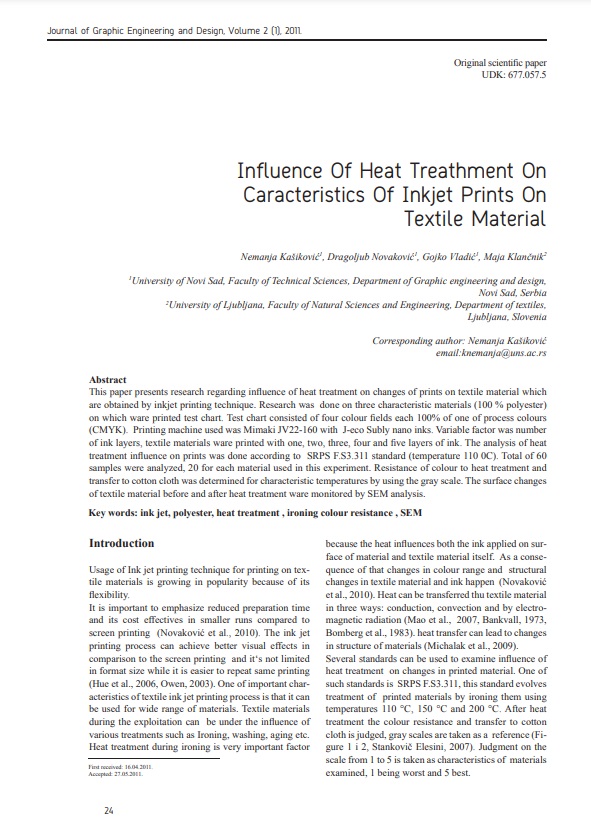Influence Of Heat Treathment On Caracteristics Of Inkjet Prints On Textile Material

Published 2023-10-01
abstract views: 259 // Full text article (PDF): 206
Keywords
- ink jet,
- polyester,
- heat treatment,
- ironing colour resistance,
- SEM
How to Cite
Copyright (c) 2011 © 2011 Authors. Published by the University of Novi Sad, Faculty of Technical Sciences, Department of Graphic Engineering and Design. This article is an open access article distributed under the terms and conditions of the Creative Commons Attribution license 3.0 Serbia.

This work is licensed under a Creative Commons Attribution 3.0 Unported License.
Abstract
-
This paper presents research regarding influence of heat treatment on changes of prints on textile material which are obtained by inkjet printing technique. Research was done on three characteristic materials (100 % polyester) on which ware printed test chart. Test chart consisted of four colour fields each 100% of one of process colours (CMYK). Printing machine used was Mimaki JV22-160 with J-eco Subly nano inks. Variable factor was number of ink layers, textile materials ware printed with one, two, three, four and five layers of ink. The analysis of heat treatment influence on prints was done according to SRPS F.S3.311 standard (temperature 110 0C). Total of 60 samples were analyzed, 20 for each material used in this experiment. Resistance of colour to heat treatment and transfer to cotton cloth was determined for characteristic temperatures by using the gray scale. The surface changes of textile material before and after heat treatment ware monitored by SEM analysis.

